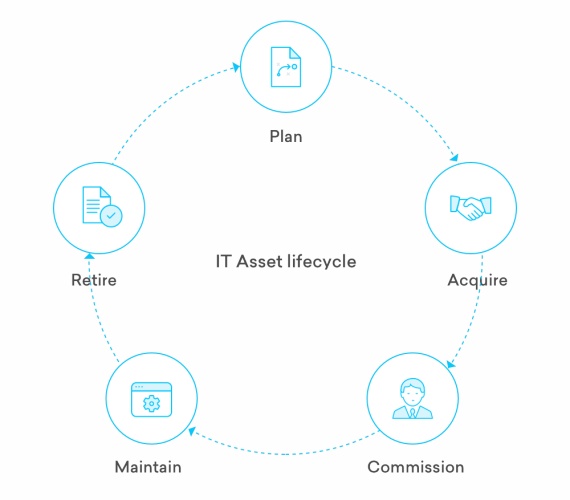Whether we like it or not, IT Assets have a finite lifespan. This is true for traditional physical IT Assets like computers and servers, as well as things like software licenses or a company’s own data.
IT Asset Management (ITAM) is about more than just knowing what computers you have and how old they are. When appropriately managed, it can help you maximise the value of your investment in IT – knowing how various devices are used, what can be repurposed (avoiding wasted license or equipment purchases), and effectively planning how they can be retired or replaced.
More importantly, effective ITAM is a critical piece of any business’s cybersecurity policy. It’s imperative that a business knows where its data is stored – and if a device goes missing that (a) this is identified; (b) there is visibility over the potential impact of its loss; and (c) it can be swiftly replaced.
The IT Asset Lifecycle is divided into the following stages:
Plan – Before any IT Assets are purchased there must be a strategic look at what the business need is.
Acquire – The IT Asset can be purchased, built, leased or licensed.
Commission – The shiny new asset is integrated into your IT environment. This is seldom just a case of plugging something in, and usually involves installation, configuration, defining process and providing user training.
Maintain – In order to maximise the value of the asset it will often need to be managed, maintained, upgraded, and so on.
Retire – At the end of its effective life the asset must be retired or otherwise disposed of. For hardware this is (ideally) a secure and environmentally responsible process, whereas for licenses it may involve discontinuing a subscription. Once the asset it retired the asset record must be updated to reflect this.
